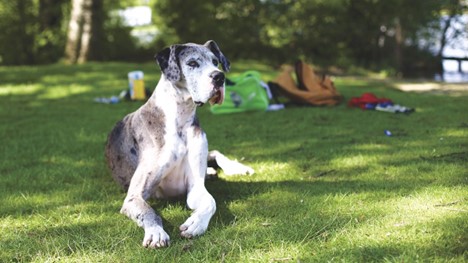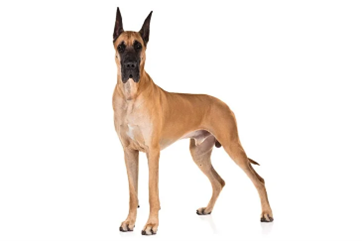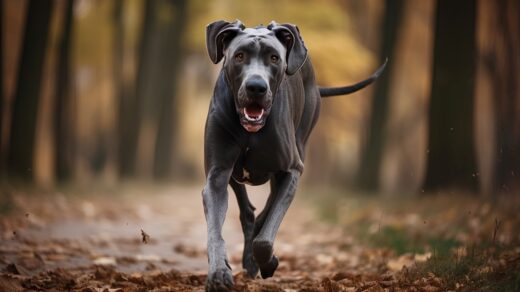Colossal in both size and heart, Great Danes on both sides of the Atlantic are huge dogs that are the same breed, but in some areas have been bred to look differently over time. According to the GDCA there is one Great Dane structural standard to which all Danes are and should be judged, but this doesn’t mean that there aren’t differences noted in every European country that breeds the Great Dane. Great Danes of the Ozarks explains some differences in the following…
A Noticeable Size Difference
Despite their name, Great Danes were first bred in Europe, Germany to be precise. They were desired as powerful hunting dogs from as long ago as the Middle Ages, and were originally derived from greyhounds, mastiffs, and Irish wolfhounds.
Many European Great Dane breeders have retained and focused on large size in their bloodlines, especially their large heads while many American breeders have slowly bred out the large skulls, leaving many US Great Danes with longer, sleeker heads and shorter statures.
This doesn’t mean American Great Danes are small – far from it! A well bred Great Dane from any country will be large, some American bloodlines don’t reach size and weight like that of some of their European cousins, nor are they generally as large boned. Aside from its head, an American Great Dane’s body is very much like that of its greyhound ancestor.
To Drool… or not to Drool
European Great Danes in some lines can have more saggy, wrinkly skin about the face, including a larger lower lip. American Great Danes generally have tighter skin and fewer wrinkles, with a less pronounced lower lip. This can possibly make the American Great Dane less of a drooler… but not by much.
Life Expectancy
All Great Dane are at risk of shorter lives bs other smaller breeds. This is because of their huge size, and their organs having to work so much harder as a result.
Perhaps because it’s that bit smaller, an American Great Dane is expected to live to around 10 to 12 years of age, whereas a very large overdone European Great Dane can be expected to live only to the age of around 8 or 9.
It’s always a good idea to check the dog’s heritage and genetics before purchase, to see if the puppy will be at risk of developing some of the more common diseases or ailments seen in the breed.

Temperament
There always has to be a disclaimer that a dog’s temperament depends a lot on its socialization, but there are some proposed differences in the character between the two types.
Because European Great Danes tend to be larger, they are often clumsier and generally more laid back, whereas a smaller, quicker American Great Dane has more energy, likes to play more, and enjoys a little extra physical exercise.
These are tiny differences that differ as often from dog to dog as they do breed to breed. Some owners will argue that European Great Danes are just as energetic as their American counterpart, so much depends on the stimulation of the environment, the regularity of exercise, and the dog’s own temperament.
Do These Differences Matter
When it comes to standardizing the breed, the criteria as mentioned above for the American and the European Great Dane is identical. Ultimately, these dogs are the same breed, and they come with the expected size and appearance. Differentiating the two should be made by scrutinizing the lineage/pedigree, not just by looking at the size/structure. Many breeders like to use the term Euro as a marketing ploy. Choose a breeder that focuses on protecting the integrity of the breed respecting the structural standard, avoid breeders who want to produce either a hyper-type euro mastiff looking dog or an over snipey greyhound looking dog.
For those looking to compete in shows, the difference between the two extremes above may be crucial, but for those looking to simply have a large, lolloping, goofy family dog that’s loyal to its owner, there’s nothing separating the two types.


